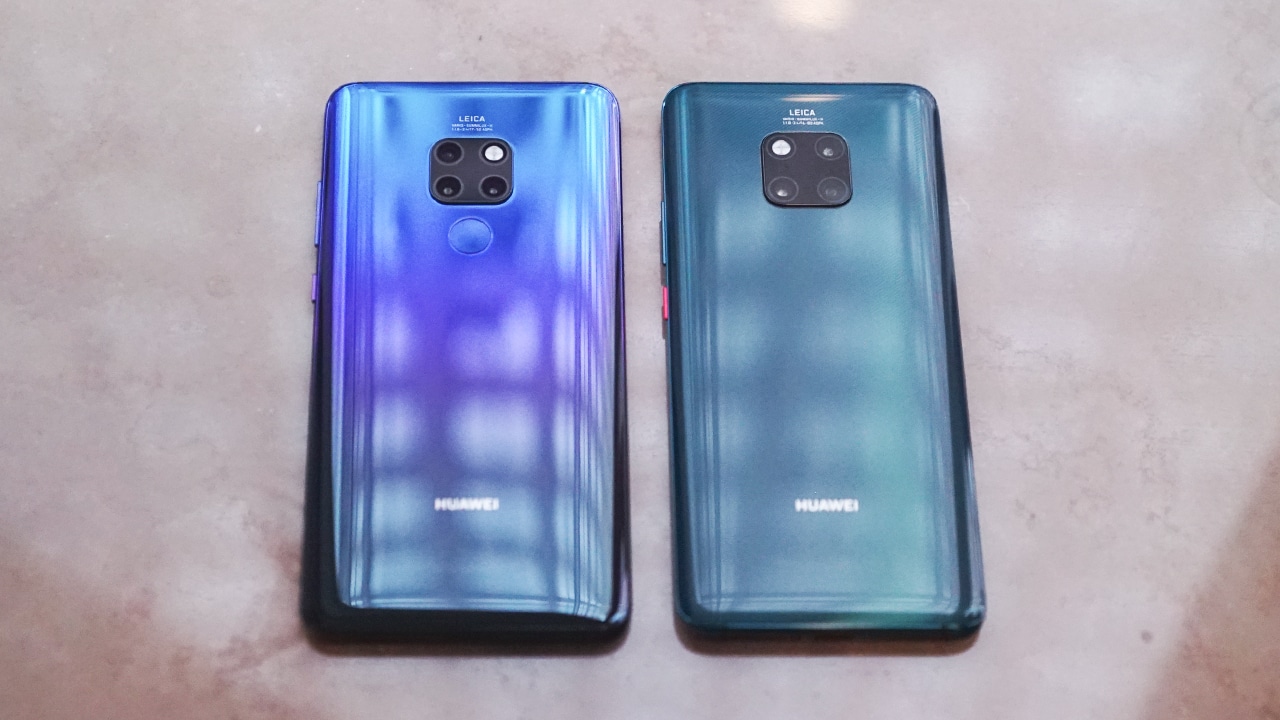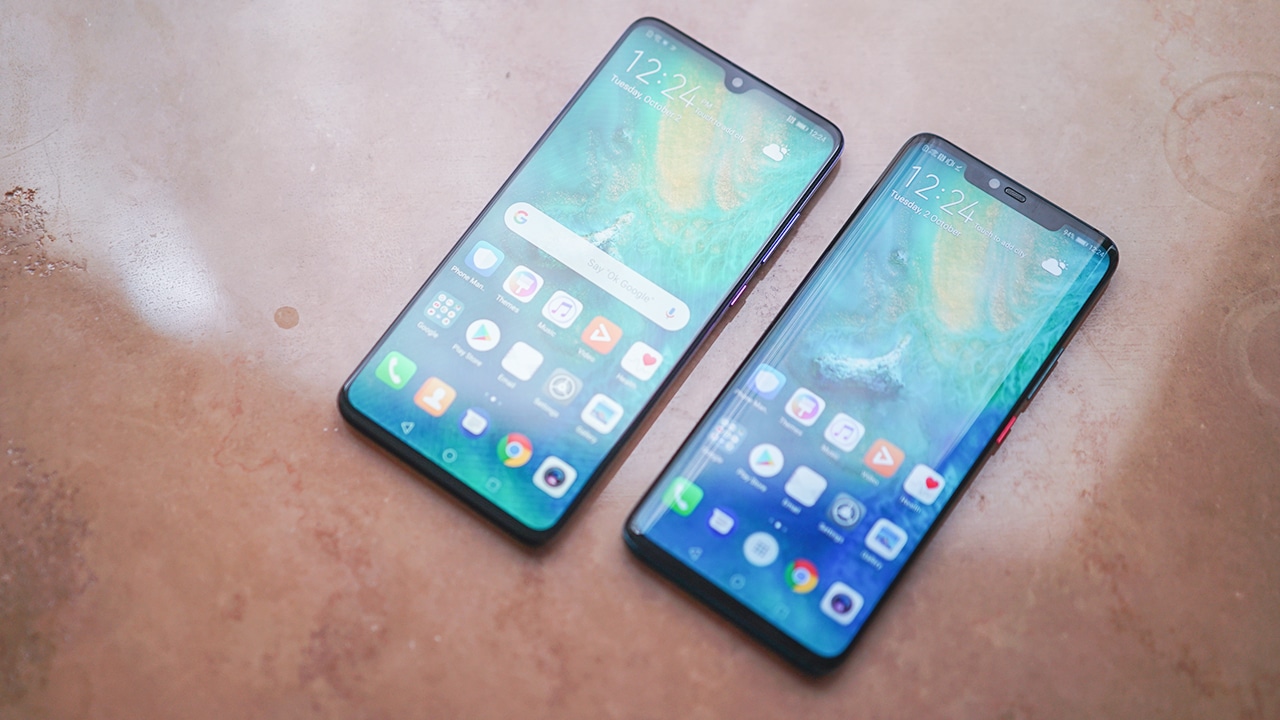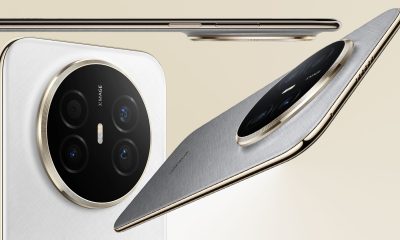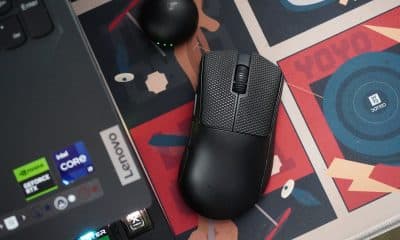News
Huawei Mate 20 series launches with Kirin 980, new Leica cameras, wireless charging
Absolutely jam-packed inside and out
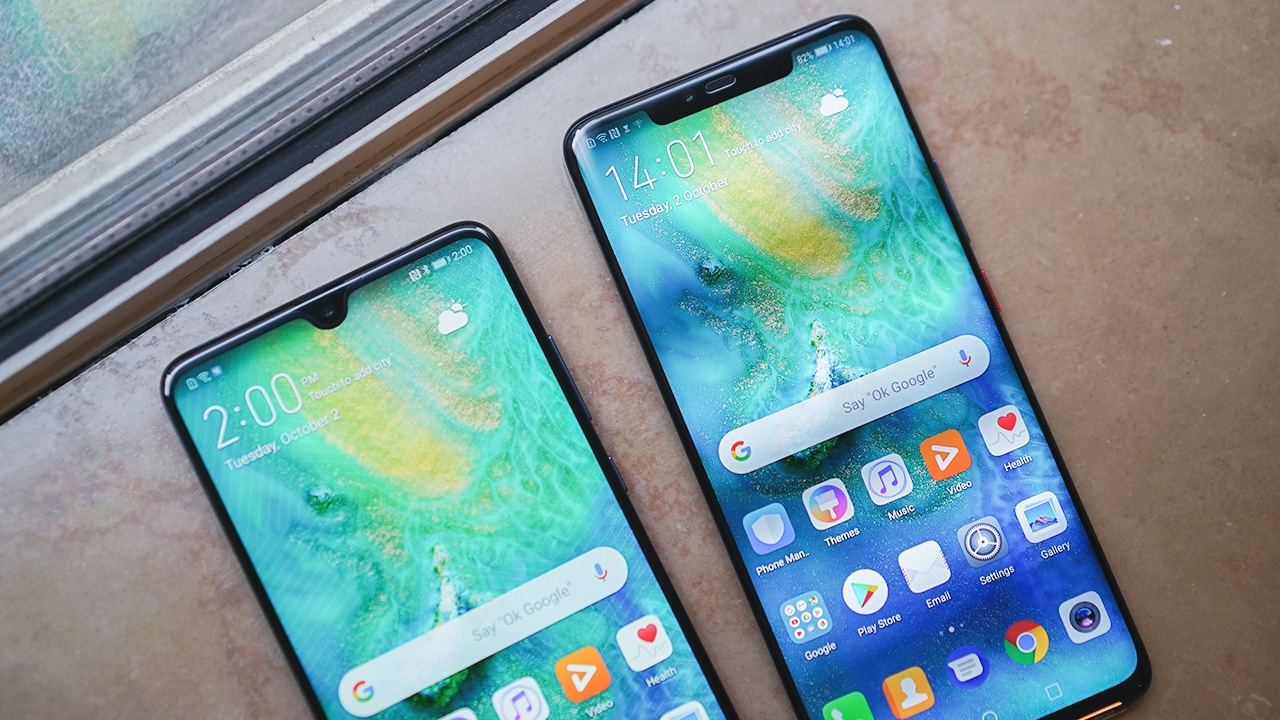
Huawei, like most brands, try their best to cram as many features as they can into a single smartphone. Having done the best they could with the P20 Pro earlier this year, Huawei’s next attempt lies in the newly launched Mate 20 series, which is feature-packed to the brim.
Before anything else, there are two models again: a regular Mate 20 and a Mate 20 Pro. They look and feel quite different, despite owning mostly the same internals.
Let’s begin with the higher-end Mate 20 Pro. Yes, it has wide notch containing a 3D depth-sensing array to go with the 24-megapixel selfie shooter for better face scanning, but that’s on top of a 6.39-inch 1440p curved HDR OLED display — allowing the phone to come equipped with an in-display fingerprint reader.
More fascinating, however, are the Leica cameras on the rear. Like the P20 Pro, there are three in place, but they’re arranged in a square format. One is a 40-megapixel main camera, another has 20 megapixels and an ultra-wide lens, and the final module offers 8 megapixels with 3x optical zoom — no monochrome sensor this time.
Another headline feature is wireless reverse charging, which allows you to charge any other smartphone wirelessly by simply placing it on top of the Mate 20 Pro’s 4200mAh battery. Getting the large capacity to full is pretty quick too, thanks to the bundled 40W SuperCharge adapter.
Memory and storage combo is standard at 6GB and 128GB, respectively. The latter is expandable up to 256GB, but only through Huawei’s new Nano Memory Card standard, which has the same size as a nano-SIM card.
The regular Mate 20 is less amazing on paper, but doesn’t stop short of being a premium smartphone. While the 24-megapixel selfie camera is still there, there are no additional sensors for 3D face recognition in the smaller notch, and even though the 6.53-inch 1080p RGBW HDR LCD is larger, it isn’t curved on the edges and doesn’t offer an in-display fingerprint scanner.
You’ll also notice a similar square camera setup, but there are a few differences: the main camera has only 12 megapixels, the ultra-wide shooter settles for 16 megapixels, and the 8-megapixel telephoto camera goes up to only 2x optical zoom. Below this is a standard fingerprint sensor.
Other compromises include a marginally lighter 4000mAh battery (with no wireless reverse charging), slower 22.5W bundled SuperCharger, lack of IP68-rated water and dust resistance, and 4GB+128GB base memory and storage (although a 6GB+128GB option is still available, plus Nano Memory Card expansion).
As for similarities, there are quite a few. The most prominent one is the shared use of Huawei’s brand-new Kirin 980 chipset, which we first saw at IFA Berlin 2018. Next is the color options: Emerald Green, Midnight Blue, Twilight, Pink Gold, and Black.
And since we’re nearing the end of 2018, it’s only right for these flagships to sport Android 9 Pie topped with Huawei’s home-baked EMUI 9 skin. They are both dual-SIM as well, as long as you don’t use the second slot for the aforementioned Nano Memory Card.
Pricing goes like this: The Mate 20’s 4GB+128GB configuration retails for EUR 799 and its 6GB+128GB model goes for EUR 849. The Mate 20 Pro’s sole 6GB+128GB variant costs EUR 1,049. Availability begins on October 16.

Gaming
Silksong is getting its first major expansion next year
The expansion is called Sea of Sorrow.

I still can’t believe that Hollow Knight: Silksong came out this year. After years of just waiting for the mythical title, it’s surreal to have it in my library. Now, barely waiting to catch their breath, Team Cherry is already working hard towards the next content drop, starting with Silksong DLC.
Just like the original Hollow Knight, Silksong is getting free DLCs to expand its story. The upcoming Sea of Sorrow DLC will be the game’s “first big expansion.”
The expansion’s trailer barely shows anything about the new content, besides vague allusions to what’s coming. At the very least, Team Cherry has confirmed, both via the announcement and the accompanying poster, that Sea of Sorrow will be nautical-themed.
It will feature new locations, new tools, and new enemies. By itself, Silksong is already a huge game. Adding more content then is a massive undertaking. Plus, Team Cherry says that this is just the first expansion, hinting at more coming in the future.
Sea of Sorrow will launch in 2026.
Besides the new expansion, the studio is also working on a Nintendo Switch 2 update for the original Hollow Knight. It will add higher framerates, resolutions, and more graphical effects. PC players will also get some upgrades to support larger screens.
The Switch 2 update, which will be free for those who already own the original game, will also launch next year.
SEE ALSO: Hollow Knight: Silksong finally releases on September 4

Before the new year starts, it’s already fair to assume that Supergirl might be one of the most anticipated movies of 2026. Premiering a year after the globally successful Superman, Supergirl will see the adventures of Clark Kent’s superpowered cousin, Kara Zor-El. Now, the next film in the sage finally has a teaser trailer.
As James Gunn mentioned previously, Supergirl will be based on Tom King’s Supergirl: Woman of Tomorrow. Off traveling to other planets to party, Kara finds herself thrust back into the role of being a hero after a young girl named Ruthye Mary Knoll asks her for help.
Though the teaser trailer is mostly a montage of scenes, we already know what we can expect. According to Gunn, Supergirl will be tonally different from Superman, and we see this in the trailer.
However, we can still see influences from Gunn including the usage of “Call Me” by Blondie for the trailer. Also, the film’s space scenes look like they can fit right in with Guardians of the Galaxy.
Still, that’s what we have, and we’re excited. Supergirl will premiere on June 26, 2026.
The film will be directed by Craig Gillespie (Cruella). Milly Alcock plays the titular character. Meanwhile, she will star alongside Eve Ridley as Ruthye Mary Knoll.
SEE ALSO: Superman sequel, titled Man of Tomorrow, comes out in 2027
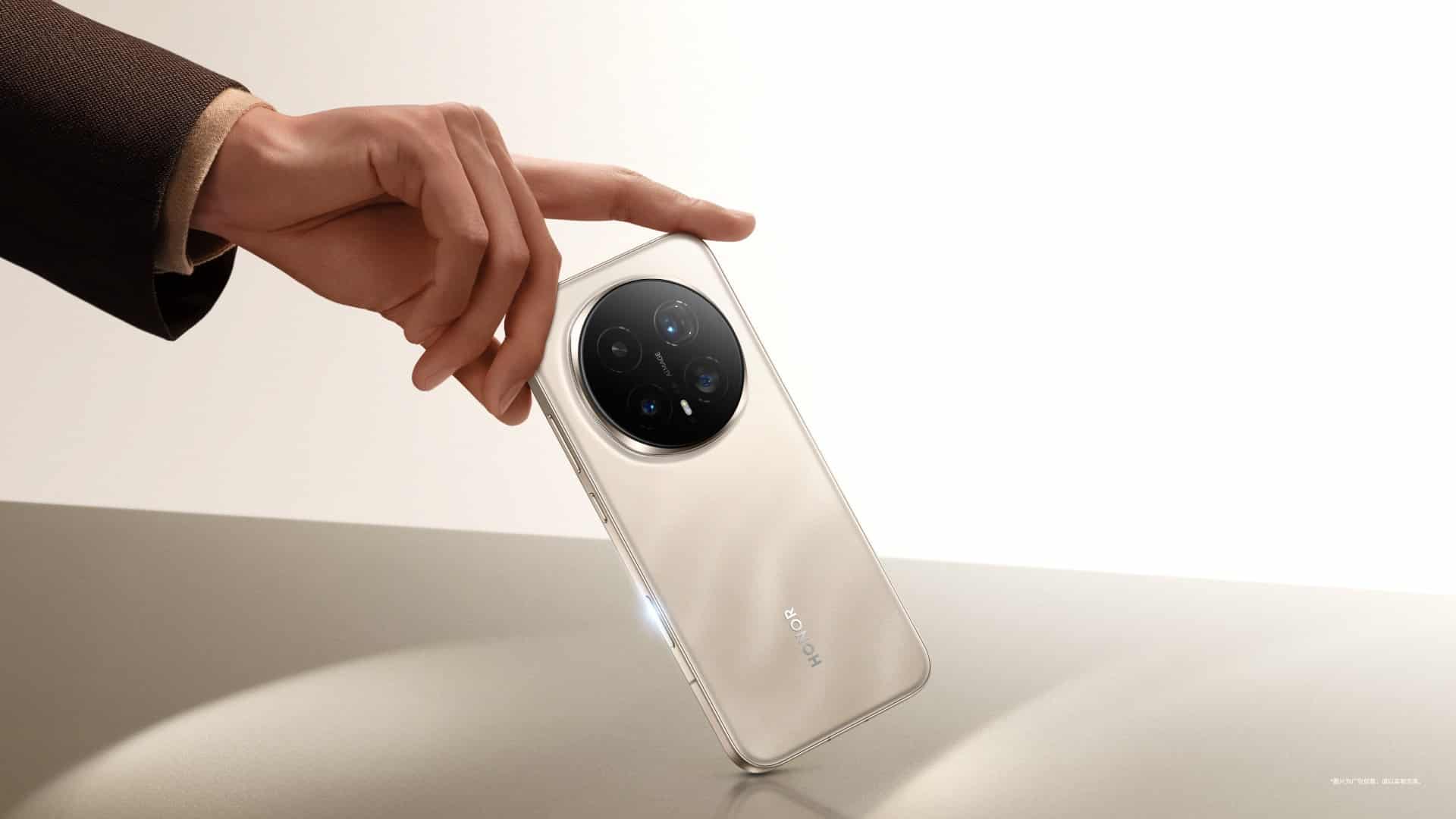
The HONOR Magic8 Pro, HONOR’s latest flagship smartphone, has been officially launched Dubai, United Arab Emirates (UAE).
Customers can place preorders starting December 11 across UAE via the HONOR Online Store, Sharaf DG, Emax, Ecity, Jumbo, Virgin Megastore, Amazon, Carrefour, e&, Eros, Noon, and Lulu.
The pricing are as follows:
- 12GB+512GB (Sunrise Gold, Sky Cyan, Black): AED 3,999
- 16GB+1TB (Sunrise Gold, Black): AED 4,699
Those who preorder will get the following as part of a preorder gift package worth AED 2,299:
- HONOR VIP Care+ with 12-month damage protection
- 3-month Google AI Pro trial
- HONOR Watch5 Ultra
HONOR Magic8 Pro: AI imaging, mobile intelligence, creator-focused tech
The introduction of the HONOR Magic8 Pro reinforces the company’s leadership in AI Imaging, mobile intelligence, and creator-focused technology.
The phone boasts of groundbreaking on-device AI innovations, including Low-bit Quantization Technology for AI Models and Next-Generation Hybrid Retrieval Technology.
Powering the Pro model is the latest Snapdragon 8 Elite Gen 5 mobile platform. It is the first phone in UAE to have the processor.
HONOR’s agentic AI capabilities and Qualcomm’s mobile platforms make it possible for the device to be more efficient and packed with computing power.
The phone also comes with a 7100mAh Silicon-carbon battery. More advanced features include the AI Button, AI Search, and AI Documents, all designed to enhance productivity and support AI-driven workflows.
For its camera package, the HONOR Magic8 Pro has a 200MP AI Ultra Night Telephoto camera and an upgraded AI Ultra Night Portrait mode.
The device also introduces AI Magic Color and a new AI Editor, enabling refined color optimization and on-device creative adjustments.
For more of the innovations on the HONOR Magic8 Pro, read: HONOR reveals 1st images of Magic8 Pro, introduces new AI technologies
-
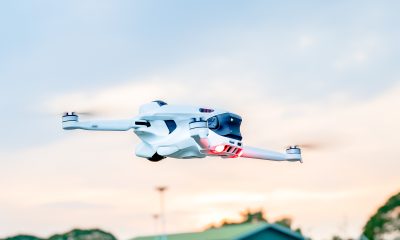
 Drones2 weeks ago
Drones2 weeks agoAntigravity A1 review: A new way to fly
-
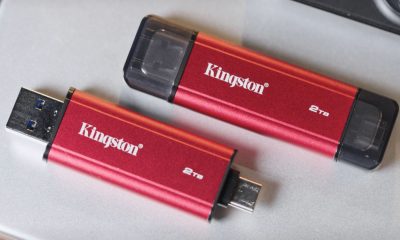
 Accessories7 days ago
Accessories7 days agoKingston launches Dual Portable SSD with up to 2TB storage
-

 Gaming6 days ago
Gaming6 days agoExpedition 33 cleans house at The Game Awards: full list of winners
-

 Reviews1 week ago
Reviews1 week agoHow the Samsung Galaxy Z Flip7 fit the life I built from the ground up
-

 Deals1 week ago
Deals1 week ago12.12 PH top picks: OPPO, Infinix, Xiaomi, Dyson, Laifen, more
-

 News2 weeks ago
News2 weeks agoOPPO Find X9 now available through Smart Postpaid, Infinity
-

 News2 weeks ago
News2 weeks agoGoogle Year in Search 2025: NBA Finals, Halalan, Dionela, Alex Eala, more
-

 Drones2 weeks ago
Drones2 weeks agoAntigravity A1 drone redefines immersive flight




